Acrid smoke, carried by stiff breezes from a nearby garage fire, recently filled the Electrolux campus in Stockholm, Sweden.
Some developers and executives felt their throats burn. At least one employee had trouble breathing. She decided to leave. But before heading home, she stopped inside the building where Andreas Larsson and his team were testing the Pure A9, an IoT-connected air purifier built with Microsoft Azure.
The moment had come to see what the new device could do in dire conditions.
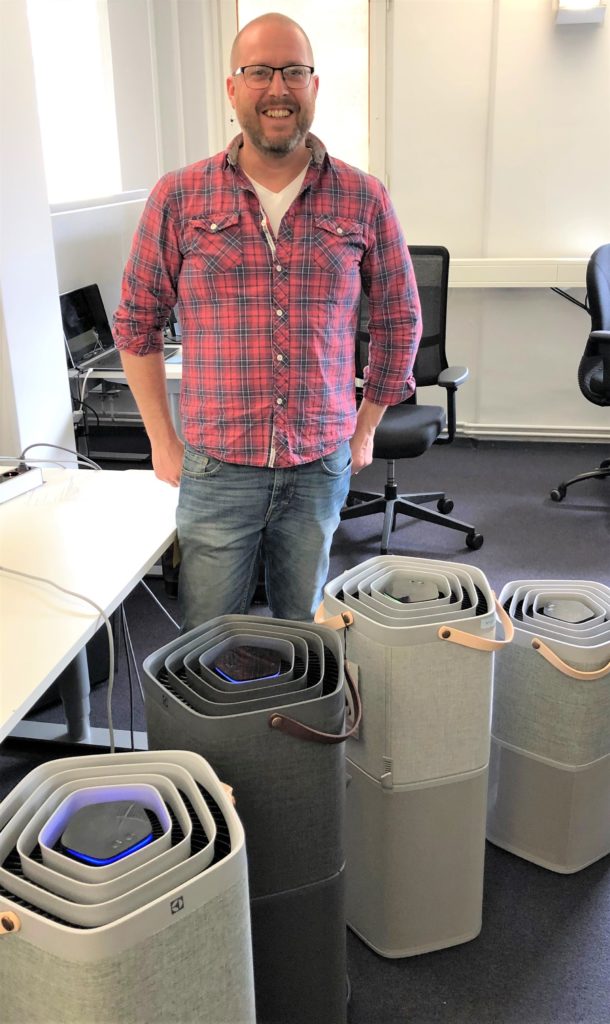
Andreas Larsson with some of the Pure A9 purifiers used to clear the air during the fire near Electrolux headquarters.
“We had 10 or 15 Pure A9 air purifiers and turned them all on,” recalls Larsson, engineering director at Electrolux. “That made a significant change in air quality. We asked her to come into our office, sit down and just work there. She took some deep breaths. She was happy. She stayed for the rest of the day.”
The Pure A9 – launched March 1 in four Nordic countries plus Switzerland and, previously, in Korea – removes ultra-fine dust particles, pollutants, bacteria, allergens and bad odors from indoor rooms.
By linking the purifier and its associated app to the cloud, Electrolux can show the product’s users real-time data about their air quality – inside and outside – while tracking interior air improvement over time. In addition, the Pure A9 continuously monitors its filter usage, alerting users when it’s time to order a replacement filter.
And as a connected appliance, the Pure A9 eventually may have the ability to learn the daily patterns of when household occupants are typically away, enabling the device to run itself on a smart schedule, Larsson says.
“If we can predict when the house is empty, we make sure not to waste filter by cleaning air that nobody is going to breathe,” Larsson says. “Then we can start the purification so the air is clean when you come home.”
Launch of the Pure A9 marks a fresh phase in Electrolux’s push to provide connected appliances to “millions of homes around the world, shaping living for the better for consumers,” Larsson says.
He dubs it the company’s “wellbeing journey into IoT, software products, data and apps” – a process that began two years ago with a cloud-connected, robotic vacuum called the Pure i9.
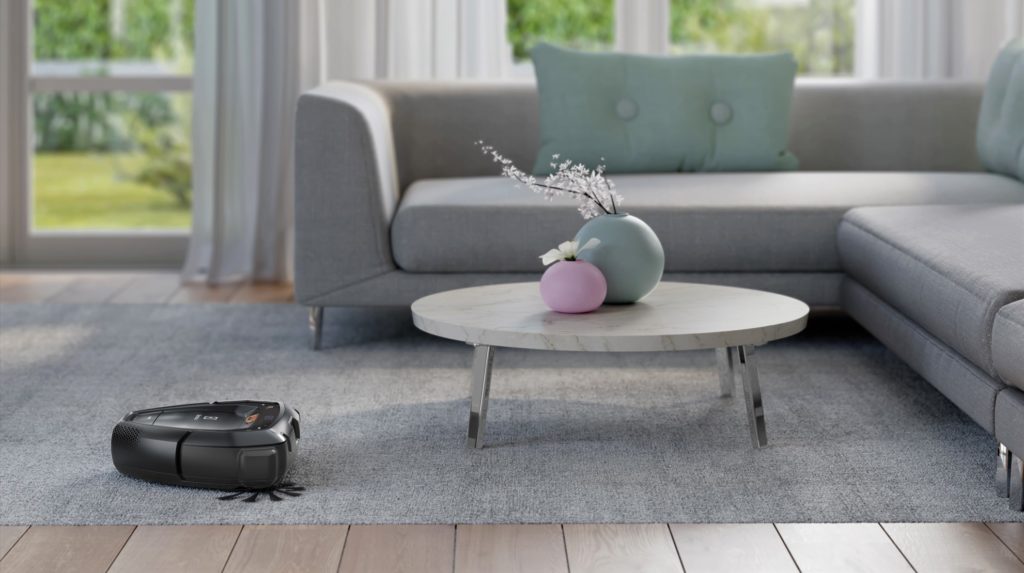
A Pure i9 cleans a rug and flooring while navigating a table and sofa.
The triangular device is equipped with a 3-D camera for smart navigation.
Moreover, its Azure IoT platform helped get the product to market quickly while also enabling developers to update software and add features after launch, Larsson says. Newer features include a map view showing where the Pure i9 has cleaned.
The roaming robot is now available in the U.S., Europe and Asia, including China.
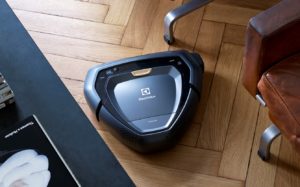
The Pure i9 in action.
Cloud data from the device also led Electrolux to launch a unique trial in Sweden: vacuum-as-a-service.
Consumers in that country can buy an $8-per-month subscription to the Pure i9 and get 80 square meters of floor cleaning, Larsson says.
“You only pay for what you use,” Larsson says. “This is not possible unless it is connected to the cloud or unless we have the data. With this kind of product, we see business alternatives we’ve never been able to do before.”
That trial underscores the digital ambitions of a 100-year-old brand once known for its canister vacuums. Today, Electrolux also manufactures and sells ovens, refrigerators, washers, dryers, water heaters and an array of other household gadgetry.
An app for the Pure A9 gives users valuable data on the state of their air.Following the Pure i9’s launch in 2017, “it soon became clear that this was not going to be a one-off product,” Larsson says. “An ambitious plan to create an ecosystem of smart, networking products … started to form.”
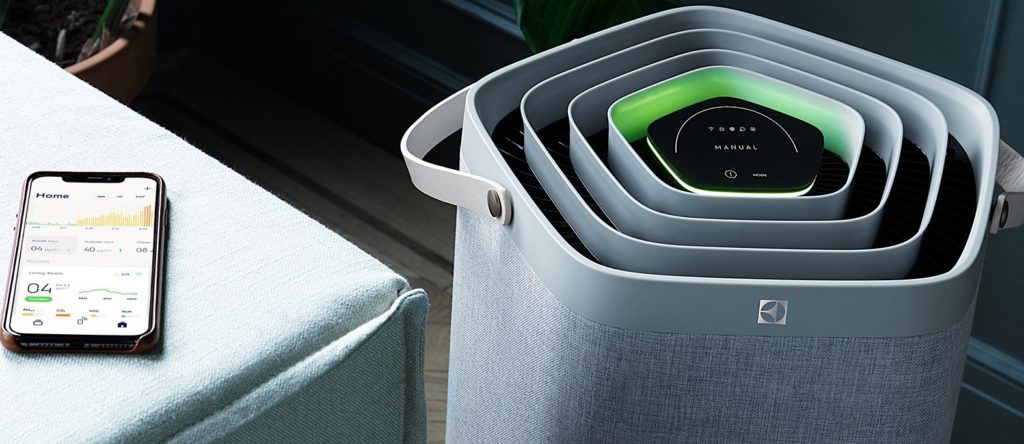
An app for the Pure A9 offers real-time data, including the state of indoor air quality.
They chose the cloud-connected air purifier as their next connected appliance. In September 2018, a team of just three Electrolux developers began building a new Azure IoT platform for what would become the Pure A9. By February 2019, that product was already on the market in Asia.
“Azure enabled them to launch a product to the whole world with minimal development investments and in rapid pace,” says Arash Rassoulpour, a Microsoft cloud solution architect who worked with Electrolux developers on the products.
Electrolux engineers also used the ready-made functions in Azure IoT Hub, instead of writing the code themselves, saving them more development time, Larsson says.
To introduce its new air purifier to consumers, Electrolux initially launched in Korea, where staggering air pollution levels have caused what legislators describe as a “social disaster.”

Another smoggy day in Seoul, South Korea. (Getty Images)
On March 5, the South Korean government advised residents in Seoul to wear masks and avoid walking outside due to a record level of fine dust particles in the air.
Numerous studies have shown that bad air outside affects air quality inside homes and offices, entering through ventilation systems.
Even worse, pollutants generated inside from cleaning supplies, cooking and fireplaces can be even harder on your health than what you breathe out on the street, according to the Environmental Protection Agency.
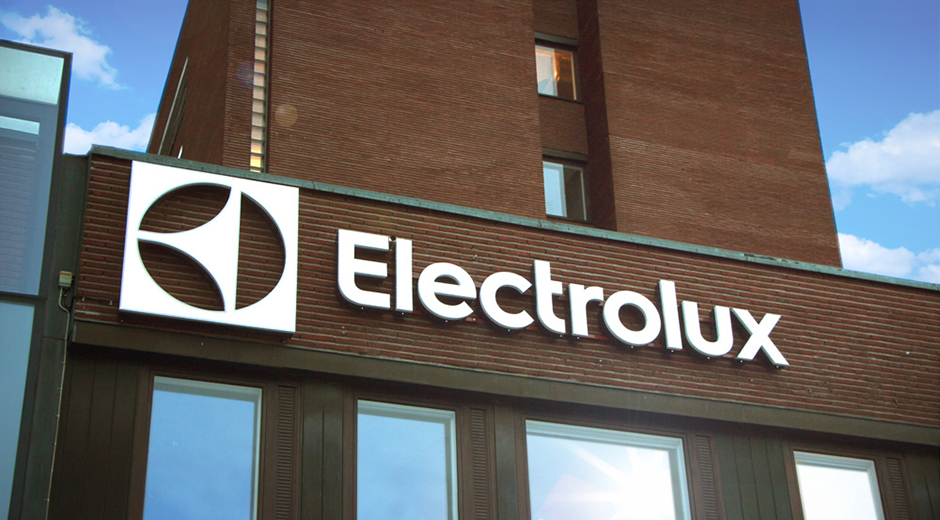
Electrolux global headquarters in Stockholm, Sweden.
“By monitoring and controlling consumers’ indoor air quality, our smart, premium air purifier contributes to a better indoor climate and increased wellbeing for the consumer,” says Karin Asplund, Electrolux’s global category director for ecosystem.
“Via the Pure A9 app, the consumer can also get an increased understanding of the actual job done by the purifier thanks to its ability to turn sensor data into understandable and actionable information,” she adds.
With the first two connected appliances now in the hands of consumers, Larsson envisions how that technology can help get the weekend started on a comfy, tidy note.
“When you come home on Friday evening, our goal is to have your home clean and pure,” Larsson says. “You can just come in, take off your shoes, sit down and feel, OK, this is my home.”
Top image: A woman holding her daughter in their home, looking through a window at a view of Seoul on a day with heavy pollution in the air. (Getty Images)
Learn how Microsoft partners are building a sustainable future at Hannover Messe 2019.

